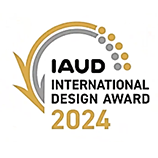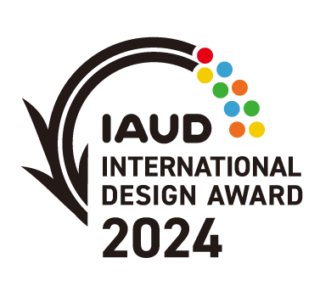IAUD International Design Award Citations 2024 CHAIR'S INTRODUCTION & FULL CITATIONS
2025.02.28 Updated
CHAIR’S INTRODUCTION 2024
The Chair of IAUD International Design Award 2024 Selection Committee
Executive Board (Former President), EIDD Design for All Europe /
Founder, Innovation for All AS
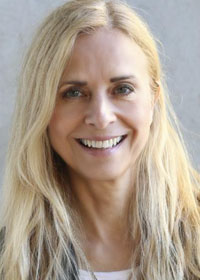
Since its inception in 2010, the IAUD award has been unique in not only promoting universal and inclusive design as a concept, but also in highlighting the benefits of this approach by presenting lighthouse projects from around the globe, and from all sectors and walks of life. In this regard the award helps to communicate the importance and value of an inclusive design strategy for both government and the business world, as demonstrated by the many mould-breaking projects, reaching far beyond the obvious communities of Universal Design.
Our philosophy is, and always has been, built upon an in-depth understanding of human diversity coupled with a desire to ensure inclusion in the framework of sustainable development. Over the past 14 years the award has evolved, both in terms of approach and methodology, and also in the type and range of applicants it attracts – which you can see yourself by looking at previous years’ winners. The number of participating countries is more widespread than ever, confirming that knowledge of the award is expanding, along with the reach and importance of it.
This year there are some interesting developments I would like to mention.
We are used to the idea of universal and inclusive design being a collective, international project, the success of which is built on sharing information and experience, as in other scientific and academic disciplines. However, things are different in the commercial world, where design processes are often seen as intellectual property and so not openly shared. Two of the Grand Awards this year break with that idea, Panasonic perhaps more clearly than Okeenea, whose core business is accessibility, but both make a point of sharing what they have learnt over many years. This is great news, and importantly highlights universal and inclusive design as a marker of a company’s social commitment.
Such willingness to share knowledge for the benefit of society, allowing others to build on knowledge and experience acquired over time and often at considerable cost, so clearly in line with a sustainable and resource saving approach, and coming from the commercial world represents a new and exciting development pointing the way towards a more collective approach to the considerable challenges we are facing in an uncertain world.
An inclusive design process can be applied in any people centred context or project no matter the level of sophistication or complexity. It is a very versatile and scalable approach, which is reflected in this year’s intriguing diversity of entries, from comprehensive public projects to small practical solutions – from the 17 prestigious art based inclusive toilets in famous Shibuya, to a small neighbourhood street in Tokyo that was developed in a co-creation process with citizens in a private public initiative.
It is also encouraging to see that countries which have not previously participated now appearing among the many candidates, and even among award winners. In addition, newcomers of a few years ago are now coming back with new projects or new and improved developments of a previous one, while a more inclusive and focused application of AI technology is also appearing in areas such as in health care, ageing and education – not entirely unexpected but nevertheless most promising for the future.
To work with the award, is a yearlong endeavour, involving many people, most crucially the organising team from IAUD, with their tireless commitment to the UD cause in general, which manifests itself in many activities throughout the year, with, up until now, the award being the most regular and visible project globally. However, this may change now that the International Universal Design Research Course is growing, and I advise everyone to take a closer look at this important online UD education opportunity on the IAUD website.
The award is a process of many stages, and the international selection committee is involved from the start, communicating and promoting the award within their own networks, but more importantly when studying the many entries in the final evaluation and selection phases. The many criteria to be considered and the numerous different categories make this a time consuming and challenging task, but also a most rewarding and educational one for all of us jury members. We get a glimpse of what is going on in the field worldwide, giving us an access to new insights and information we would otherwise have difficulty in gaining. The main output of the work is preparing the Citations, which describe and comment on each project from the jury’s perspective, and I strongly recommend you to take a look and be inspired.
I will end this introduction with a big congratulation to all the worthy award winners – it is quite an achievement to receive one, and something to be most justifiably proud of!
Finally, a big thank you to IAUD, to the jury and to everybody else involved in making this happen!
Citations for Grand Awards (3)
Citations for Gold Awards (7)
Citations for Silver Awards (6)
Citations for Bronze Awards (11)
Citations for Award of Excellence for Student Design Challenge (1)
Citations for Student Design Challenge Award (1)
Announcement of IAUD International Design Award 2024 Winners
JUDGING CRITERIA
The past ten years of the awards have seen sustained progress, and to maintain this momentum the Judging Panel is looking for entries that:
- Push the boundaries of Universal Design in new and exciting directions.
- Prioritize high-quality user-based research, in particular direct engagement with disabled users and others at risk of being excluded from the market.
- Consciously avoid exclusivity arising from innovations and new technologies, in particular for specific groups of users.
- Go beyond conventional ‘usability’ by identifying specific problems relating to diverse groups of users and delivering solutions to them.
- Demonstrate long-term corporate commitment to UD, supported by a company-wide vision and plan to ensure continuing improvement.
- Are supported by honest and informative promotional material.
Essential Goals of the IAUD International Design Awards Program
- Sustainable and Universal: The entry presents concepts and practices suitable for creating a sustainable, mutualistic society.
- Diversity and Inclusion: The entry shows an understanding of the diversity of traditions, cultures, lifestyles and people, and does not exclude minorities but rather expressly includes them; and thus contributes to realizing a qualitatively rich and happy way of life.
- Safe and Secure Society: The entry contributes to the construction of mechanisms, systems and morals appropriate to a society that protects human rights and respects the humanity of every individual.
- Spontaneous and Sustainable Dialogue: The entry serves to build ongoing exchanges and relationships between corporations, design practioners and clients, government, research institutions, NPOs, and citizens.
- Passing-on of Knowledge and Skills to the Next Generation: Through disseminating universal design and knowledge about it, the entry serves to cultivate individuals suited to lead the next generation.
IAUD International Design Award 2024 Selection Committee
- Chair of the Selection Committee: Onny Eikhaug (Executive Board (Former President), EIDD Design for All Europe/Founder, Innovation for All AS, Norway)
- Co-chair of the Selection Committee: Fumikazu Masuda (President, open house inc./ Visiting Professor, Nagoya University of Arts and Sciences, Japan)
- Advisor to the Selection Committee: Roger Coleman (Professor Emeritus of the Royal College of Art, UK)
- Members of the Selection Committee:
- Francesc Aragall (President, Design for All International /Founder, ProAsolutions, S.L., Spain)
- Thomas Bade (Founder/Partner, Institute for Universal Design, Germany)
- Valerie Fletcher (Executive Director, Institute for Human-Centered Design, USA)
- Rama Gheerawo (Director, Helen Hamlyn Centre for Design, Royal College of Art / RCA Reader in Inclusive Design, UK)
- Antika Sawadsri (Dean, School of Architecture, Art, and Design, King Mongkut’s Institute of Technology Ladkrabang, Thailand)
- Keiji Kawahara (Professor Emeritus, Nagoya University of Arts and Sciences / Executive Director, IAUD, Japan)
Grand Awards 2024
- In the category of Education
- ClassAll’s Accessibility Tools for Equal Learning Opportunities
Woongjin Thinkbig: Korea
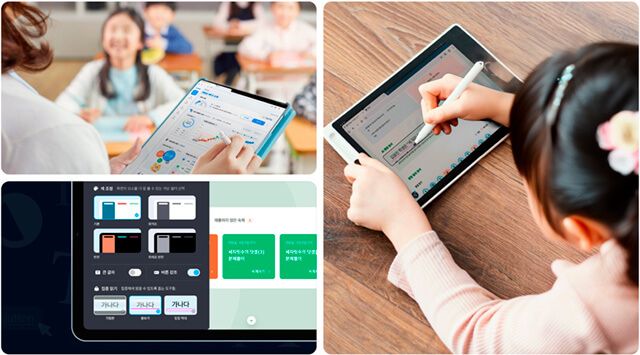
ClassAll is a serious attempt to create an adaptable user interface for digital textbooks, which are increasingly used in education, with the goal of ensuring equal learning opportunities for all children. Teachers design data-driven lessons, students engage with personalized AI-optimized content, and parents receive detailed updates on their children's learning activities. User customizable features enhance readability and comprehensibility for users with vision and cognitive challenges, while useful performance-based feedback is generated for teachers and additional exercises and information are offered to students. User feedback has been an important part of what is seen as an ongoing development process.
The jury said of this project:
This submission clearly demonstrates the potential of AI for universal design and for equal learning opportunities, by catering for diversified needs from a common platform. The Jury highlighted its innovative use of AI to create tailored learning material that can support both educators and students as an example of inclusive education in practice.
- In the category of Business Strategy
- “Expanding Empathy” Panasonic’s Inclusive Design
Panasonic Holdings Corporation: Japan
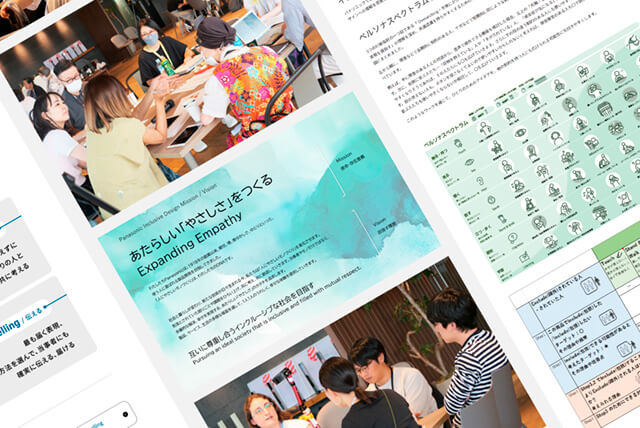
At the 2006 IAUD conference Kazuo Toda, Vice-President of Panasonic identified the “unique spirit of considerateness and attentiveness (that) has lived in the Japanese since ancient times” as the source of his vision for universal design. For over 20 years Panasonic has championed this approach, creating an impressive portfolio of exemplary designs reflecting its deep understanding of the potential of design to transform the world for the better. It has spread this ethos throughout the company and more recently successfully embraced the transition from universal to inclusive design by recognizing the value and benefits of looking beyond user capabilities and their limitations towards a better understanding of diversity, lifestyle and aspirations as drivers for innovation. This rich experience has now been brought together in a knowledge base for inclusive design, which the company is generously and openly sharing to help promote social change and inclusion on the broadest scale.
The jury said of this project:
It is highly commendable that Panasonic, a leading global brand, is setting an example in pushing the idea of inclusive design to the forefront of corporate business strategy. This demonstrates a deep understanding of user needs and the value of an empathy-driven collaborative design process. It is a message that we hope will have a significant impact on companies and governments around the world.
- In the category of Regional Planning
- Inclusive Multisensory Signage
OKEENEA: France
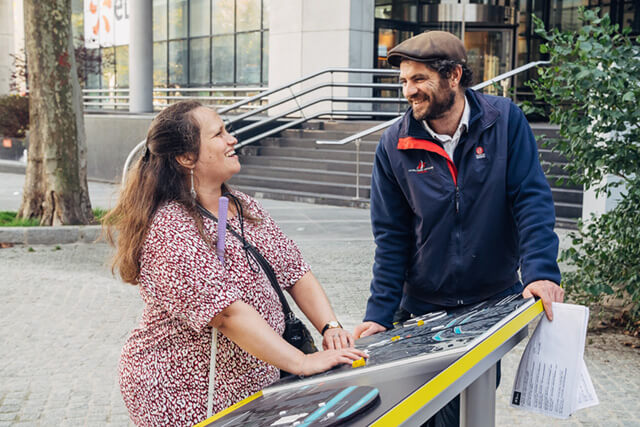
The goal of this innovation partnership was to produce a durable, long-lasting, and adaptable signage system for the Paris 2024 Olympic and Paralympic Village by applying a participatory design process to the entire research, development, implementation and validation process, and it has achieved this in an exemplary way. The 2024 Paris Olympic signage is in every way a trailblazing demonstration project, and importantly one that sets out to share its methodology and lessons learnt. This is a tested and proven signage system that can be freely replicated in other cities and adapted to other cultures and environments, and as such is a fine example of the collective spirit behind the best of inclusive design.
The jury said of this project:
It is clear that the signage system has been meticulously researched and is well-constructed through a participatory design process all the way. An inspiration for cities globally, its potential for replication is facilitated by a detailed guide.
Gold Awards 2024
- Imaging the Future
- “Metamorphic Lavatory” - Accessible Aircraft Lavatory to Enhance Comfort for All
Japan Aerospace Exploration Agency / JAMCO Corporation: Japan
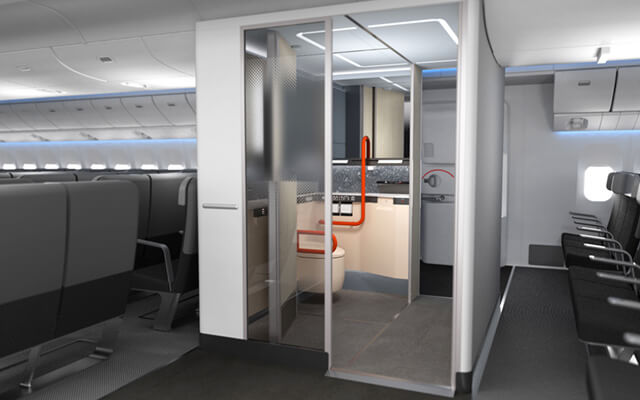
There is currently a big problem with aircraft toilets for passengers who need a high level of assistance and those for whom existing facilities are cramped and inaccessible. The “Metamorphic Lavatory” addresses these more demanding passenger needs with an expandable accessible aircraft lavatory design that most efficiently uses limited cabin space. It can accommodate passengers needing total assistance by ensuring that use with caregivers is both possible and practicable, as it is in ground facilities. It is also designed for infants, children with developmental disabilities, and people with stoma, thereby ensuring inclusivity for all.
The jury said of this project:
Excellent user research leads to a clever and innovative use of limited space that addresses an important challenge in aircraft design. By offering a comfortable and practical lavatory space for a more diverse group of travelers the Metamorphic Lavatory demonstrates how airlines can fully meet real life needs. A bold initiative!
- Public Space Design
- THE TOKYO TOILET
Shibuya City / MASTER MIND LTD.: Japan
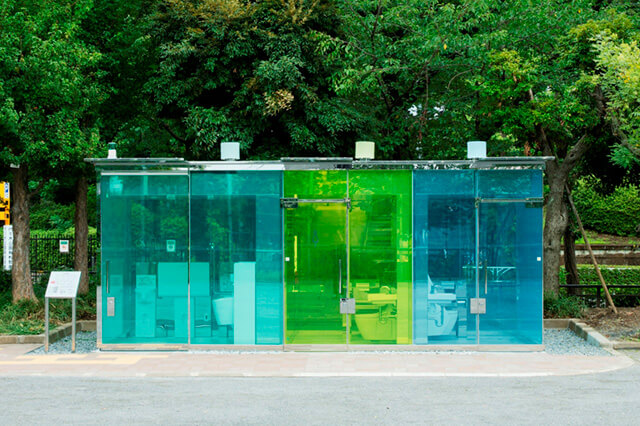
The Tokyo Toilet project set out to refurbish and reinvent 17 existing public toilets in the Shibuya Ward in readiness for the Tokyo Olympic and Paralympics of 2020 and to showcase Japan as a society that embraces diversity. Sixteen renowned architects and designers were challenged to transform previously run-down conveniences into landmarks of inclusion and delight. What marks this project out, apart from the star line-up of creative talent involved in its conception and realization and the scale of its ambition, is the aspirational quality of the seventeen game-changing toilet spaces that have been created in this emblematic district of Tokyo. By turning the all too often neglected and marginalized public toilet into an icon of Japanese consideration, the Tokyo Toilet team have delivered a celebration of diversity in a truly Japanese spirit, making inclusivity stylish, warm and human-centered.
The jury said of this project:
A remarkable set of design solutions that have raised the visibility of Japan's global leadership in inclusive toilet design. A unique and appealing way to demonstrate to the world the importance of public toilets for all, and to showcase the Japanese inclusive mindset, combining respect for and empathy with the users.
- Public Space Design
- Treetop Walk for all - Hamaren, Fyresdal, Norway
EFFEKT / HØGDE(FAUN) / FYRESDAL KOMMUNE: Norway

Norway’s first Treetop Walk opened 2023 as a delightful and exciting addition to the Hamaren Activity Park in Norway. A 1km plank boardwalk extends on pillars from the forest floor to the summit, making the forest canopy accessible to all. It is good to see that the team and local community at Hamaren are committed to continuing the development of this exemplary facility and 2021 Grand Award winner. A high level of user involvement and local engagement combine to deliver a universally designed experience, offering all nature lovers, regardless of age, ability or physical limitations, the sensational feeling of walking amongst the treetops.
The jury said of this project:
A walk in the treetops that all can enjoy sounds terrific! A jaw-dropping, inspirational, elevated experience available to all. The Nordic mindset of inclusion is presented in practice here and could act as a benchmark study for other nations.
- Public Space Design
- Busan Metropolitan City’s Universal Design Pilot Project
Busan Metropolitan City / Design Council Busan: Korea
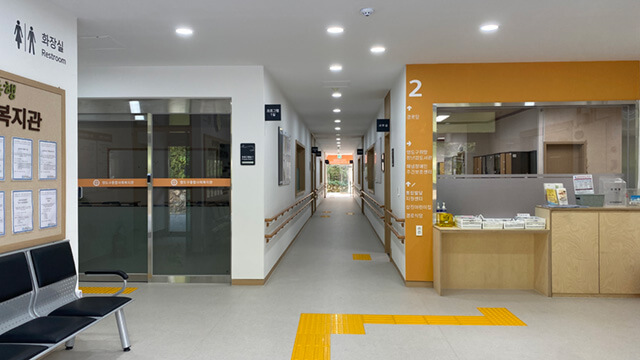
Despite its aging facilities, the Yeongdo-gu Social Welfare Center has become an essential space for local residents, due to its 24-hour accessible restrooms and community-centered programs. Its redesign, undertaken by the city government, was based on a range of key challenges identified through interviews and workshops with the center’s users, leading to universal design solutions to address them. Perfectly researched with the local community, a staged participatory co-design process based on well-established inclusive design methods, such as stakeholder mapping and the capturing of customer journey, provided a clear context for idea generation and validation leading to well-resolved design proposals for the centre.
The jury said of this project:
Valuable as a model participatory design process involving diverse users, and in this case the citizens of Busan. The universal design approach can be seen everywhere from specific design elements to the improved appearance of the building as a whole, which could serve as an example of the best of universal service design in South Korea.
- Co-Design
- CEATEC 2023 Sony’s Booth
Sony Group Corporation: Japan
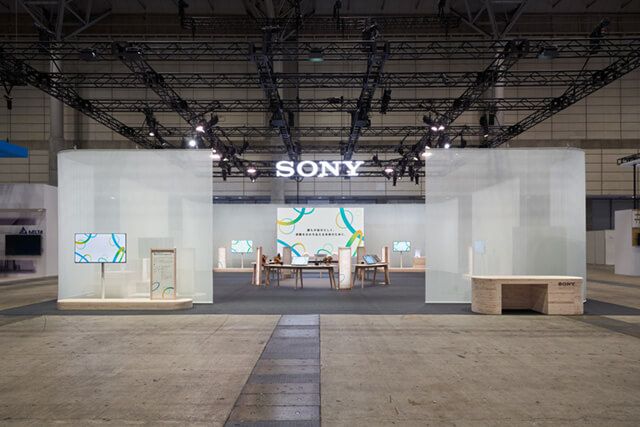
Sony’s stand at the CEATEC 2023 trade fair featured products and services born from inclusive design. It was conceived as a testbed for the purpose of trialing and evaluating a range of accessible and user-friendly stand components and designs. The booth was designed to be open and easy for all to navigate, and to achieve this a wide range of users and experts collaborated in the design of all spatial elements, from the legibility of graphics to the aisle widths. Real life testing at CEATEC 2023 resulted in a set of design guidelines for future trade fairs.
The jury said of this project:
A clever idea, using an exhibit as an evaluation platform for accessible designs, which in turn support Sony’s brand and products as user-friendly and accessible for all. If the exhibit design guidelines become the template for future Sony stands, they could give a competitive edge by welcoming a more diversified customer group and at the same time promote the Sony brand.
- Product Design
- The Hug Drum, a "Yuru" Musical Instrument
Sony Group Corporation / Sony Music Entertainment (Japan) Inc.: Japan
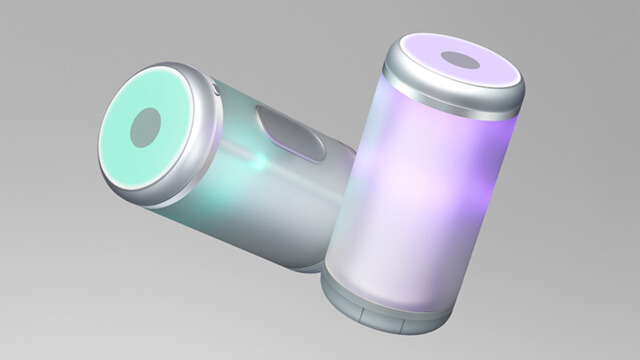
A delightful idea well realized through a co-design process involving Sony’s design team and mentors with hearing impairments. Inclusive in its design and also clearly infectious in use, the Hug Drum is an inclusive percussion instrument that allows anyone to join in and enjoy a jam session. In order to develop this imaginative concept, designers from Sony worked with lead users with hearing impairments and professional musicians. The result is an inclusive percussion instrument that conveys sound through light and vibrations.
The jury said of this project:
One immediately feels the desire to join in the drumming. An inspiring demonstration of how deaf individuals can be quite naturally included at an equal level. The fusion of expert users and professional musicians in a co-creation process guided by the Sony team has resulted in a musical instrument everyone can enjoy.
- Service Design
- Santander Retail & Santander Business Banking Apps
Santander: UK
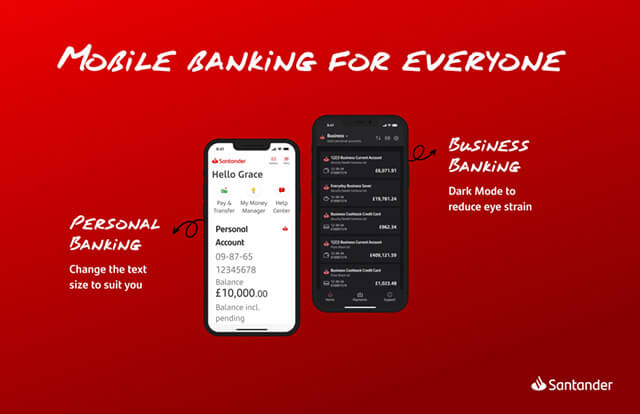
Santander aims to be “an inclusive and accessible bank that is there for the moments that matter for their customers”. To achieve this, in the form of the bank’s key user interfaces, a collaborative design process was put in place involving people with a wide range of capabilities, thus ensuring that the latest versions of Santander’s retail and business banking apps are useable by all the close to 10 million people who rely on them to manage their day-to day finances. This is an excellent example of clear, adaptable, user-centered interface design, combining cleanly resolved graphic design and with an emphasis on simplicity and clarity, with a technical focus on delivering cross-platform usability. Exactly what is expected from a top UK-based company.
The jury said of this project:
Santander goes well beyond the WCAG standard by incorporating new and highly user-friendly features in their banking applications based on insights from extensive collaborative user research including staff members with disabilities. The project and its process could serve as a model and a beacon for the financial industry. A great example!
Silver Award 2024
- Regional Planning
- Babakkawa Urban Design Project
Maebashi Design Commission: Japan
A well-realized town centre regeneration project with considerable local citizen involvement. Not originally intended as an inclusive design project it progressively became one due to its ageing target user and has done so while retaining the locality’s small-scale charm. This appears to be attracting people back to the local market and thereby breathing new life into the area. Local people have had an involvement throughout the project and continue to do so.
The jury said of this project:
A fine example involving private and public stakeholders, of how citizens' involvement can help create better environments. It emphasizes the importance and value of inclusive design philosophy to society.
- Inclusive Culture
- Shaping the Future: The 'Timescape 1600–1914' Exhibition as a Catalyst for Universal Design at the Norwegian Museum of Cultural History
Norsk Folkemuseum STI, Norwegian Museum of Cultural History: Norway
Breathing new life into older museums more often than not requires a profound rethink of how the visitor experiences the museum and its collections, with storytelling playing an increasingly important role. Bringing heritage buildings into line with modern practice and visitor expectations makes the process yet more challenging, but by placing user involvement and consultation at the heart of this major renovation the Norwegian Museum of Cultural History has delivered a highly accessible, inclusive and visitor-friendly experience for all, creating valuable precedents in the handling of physical elements, information presentation signage and navigation.
The jury said of this project:
A good example of how to incorporate universal design into an old public museum building and permanent exhibition. The involvement of users with disabilities from the development stage was a key factor in its success, setting a benchmark in inclusive, participatory exhibition design. The museum app, with digitally compiled exhibit content in text and audio, makes the historical exhibition an inclusive, engaging and accessible experience for all to enjoy, both during and after their visit.
- System Design
- Fujitsu GUI Next Plus (FGNP) design system “A GUI design foundation that evolves with users, and aims to contribute to an inclusive society”
Fujitsu Limited: Japan
Fujitsu’s Graphical User Interface Next Plus (FGNP) is a building block based toolkit that allows for the effective implementation of web interface designs. By simplifying and standardizing the process, the toolkit guides web design, development, and production teams towards the realization of WCAG 2.2-compliant solutions that ensure comfortable usability for everyone regardless of age, language, or disability. Ongoing user testing and feedback underpins the toolkit, as exemplified by validation of screen reading with vision-impaired users.
The jury said of this project:
Fujitisu’s FGNP makes it easy for companies to consistently integrate universal design and user experience into their digital products, thereby saving time and money and ensuring that digital solutions are accessible and in compliance with WCAG guidelines. A good example of how Fujitsu design continues to evolve through co-creation.
- Healthcare and Welfare Design
- The CONNECT Digital Dementia Engagement Platform
Hopeful Aging, LLC: USA
Designed so that people living with dementia can themselves facilitate the programs, Connect uses evidence-based methodology to adapt engagement and learning experiences for persons in all stages of cognitive challenges. John Zeisel is well known for his research in this field and has devoted much time to it. Connect has been very thoroughly researched and trialed, working carefully with users and their carers, clear benefits have been identified, quantified and verified by clinical trials and the video of the digital platform is convincing, while the system itself is ready to launch.
The jury said of this project:
This is a great dementia engagement case study, supported by strong research and clear user evaluation data. The focus on engaging patients in the activity of cognitive training in a simple, social and joyful way, is most convincing.
- Healthcare and Welfare Design
- "MeAMOR" gently protects families living apart from each other with home appliances
Mitsubishi Electric Corporation: Japan
Monitoring of older people living alone has become an inevitability, and minimizing direct observation is the best way for that to be achieved. MeAMOR is a light touch service that uses home appliances to discretely monitor family members living apart. It requires no dedicated equipment, and users can start monitoring with a single appliance. Furthermore, increasing the number of connected appliances enables more detailed monitoring of various situations in everyday life. Since family members are not monitored via camera, their living conditions can be monitored as needed while still protecting their privacy. User surveys informed the design and there is a clear degree of considerateness behind this service, with the fee structure making it available to a wide range of users.
The jury said of this project:
Simple and quickly deployable solutions are needed to cope with demographic change. MeAmor is an important and innovative approach to this challenge from a home appliance supplier and an extension to its product services.
- Social Welfare Services
- "High-Enter" - A Unique Model and Practice for Vocational Training, Life-Long Education and Inclusion in High-Tech Companies in Israel
Shekulo Tov Group: Israel
High-Enter, along with two other Shekulo Tov Group entries forms part of a holistic approach to equipping people with disabilities with the skills and knowledge necessary to find satisfying work, in particular in the information technology sector, and also to supporting them over the longer term with targeted continuing professional development. It is a professional model offering creative solutions for the inclusion of people with disabilities in high-tech companies in Israel through on the job vocational training and life-long education.
The jury said of this project:
A good and sustainable approach that helps employees and companies while raising awareness of the issue of inclusion. A model that can easily be replicated elsewhere.
Bronze Awards 2024
- Graphic Design
- Designing Citizen Happiness through Busan's Welfare Brand, “Annyeong Busan (Happy Busan)”
Busan Metropolitan City: Korea
A delightful story about how a series of welfare services have been linked together into a coherent whole under a single, inclusive, and people-friendly branding. The result is a deeper visual connection between Busan City’s social and welfare services and the vulnerable people they serve, which highlights the strong commitment of the Busan City Council to quality service delivery.
The jury said of this project:
Promoting the value of urban design and services centered on people with disabilities through this heart-shaped logo. The various services are all proving a strong commitment to care for their citizens, although it is not clearly described how the users have been in involved in this design process
- Social Welfare Services
- Rebooks - Accessible Digital Platform for People with Disabilities
Shekulo Tov Group: Israel
The Shekulo Tov Group provides high-quality training that prepares disabled people with the necessary skills to enable them to work within the Rebooks chain of 25 stores and logistics centers across Israel. Rebooks is the biggest on-line seller of second-hand books in Israel with a commitment to employing disabled people, and to facilitate this the Shekulo Tov Group developed an accessible and universally designed custom digital platform as part of the group’s wholistic approach to equipping people with disabilities with the skills and knowledge necessary to find satisfying work.
The jury said of this project:
An important approach to give people with disabilities professional opportunities in the digital world of work. Universally designed digital platforms for e-commerce can ensure inclusion of PwD in the labor market by enabling them to work from home. It would be interesting to transfer the experiences and adaptations of the platform to other providers.
- Social Welfare Services
- “Enter” - Vocational Training and Career Development for People with Disabilities
Shekulo Tov Group: Israel
A comprehensive training program, that aims to equip people with disabilities professional or academic qualifications with the skills and experience they need to find satisfying work, in particular in the information technology sector. The program operates from a series of hubs where people can find the support and guidance they need in both the short and longer term.
The jury said of this project:
Much needed career development helping people with disabilities to thrive, although how potential employers are supported is not mentioned, neither is the link to universal design.
- Housing and Architecture
- An inclusive society enlightens UD. “Todaimae HiRAKU GATE” How office toilets should be and the concept expressed through signs.
Ueda Universal Design Room / Tashiro Design Studio / Shinko Shuppansha KEIRINKAN Co., Ltd.: Japan
A mixed usage office building that is welcoming and considerate of diverse needs. The signage design is a key feature of this inclusive building and particular attention has been paid to toilet areas, all of which underlines the inclusivity of this office building.
The jury said of this project:
Nice, clean inclusive design! Considerate and goes beyond what is expected or common for (private) office buildings, however UD considerations seem somewhat biased towards signage design.
- Fashion Design
- Ten years after launch - the evolving Universal ‘Beauty’ Design of PRIOR
SHISEIDO Co., Ltd. / SHISEIDO CREATIVE Co., Ltd.: Japan
A well researched and positioned addition to Shiseido’s Prior skin-care range for the mature woman. This range has proved its relevance over time and continues to evolve. Easy to open environment-friendly packaging, along with information and publicity that is easy to read deliver the brand’s promise of a peaceful and confident everyday life-style.
The jury said of this project:
Shiseido's commitment to continuously engaging with the interests of its customers and embracing their diverse aesthetic challenges is truly remarkable. Unmatched by comparable manufacturers, Shiseido’s understanding of the concerns and aspirations of women of all ages from a universal design perspective is truly inspiring.
- Imaging the Future
- A Smart Factory Concept that is Friendly to All People
Mitsubishi Electric Corporation: Japan
A conceptual proposal from Mitsubishi for smart factories in a future of decentralized production in community settings. Here augmented reality technology enables people both inside and outside the factory to collaborate and communicate, sharing services and equipment in connected community. An up-to-date version of 19th century utopian ideas of self-sufficient communities centered around fields, farms and factories working together in human scale networks of production and consumption.
The jury said of this project:
It is an interesting proposal but further development should be backed by more inclusive, user-centered research to verify that these AR tools really can contribute to human wellbeing. How would it work in practice? Not a case of universal design at this conceptual stage.
- Education
- Pen set for memorization with blue sheet
KOKUYO Co.,LTD.: Japan
A pen set developed to address a specific problem for colorblind students in Japan. Well-executed user research in collaboration with the Color Universal Design Association uncovered a clear need, and through ideation and co-creation workshops coupled with iterative testing, a new functioning solution was developed. A good example of how a universal design process can lead to user-friendly innovations.
The jury said of this project:
Refreshing in that it addresses the needs of a specific group without differentiating from the majority and shows how a universal design process can lead to new user-friendly innovations. This might also be applied by color blind students outside Japan as a new tool.
- Regional Planning
- Children’s third place “TAKUWAERU”
Masahiko Hara (architect) / Makoto Kindergarten Tatsuo Yamamura, Masami Ishizuka / Future Grip Labo. Ituki Yamamura / Sou Tomoyuki Saito / Washizu architects office Mihoko Washizu / Archarch Design Architects Tsunetaka Nomura: Japan
With a subsidy from the Nippon Foundation's “Third Place for Children Project,” we designed a small wooden facility that resembles a house for children, their parents, and the community as a place where children can live and learn after school hours. A delightful response to the social problem of children mostly from one parent household who may not be going to school or return from school to an empty house, in the form of a small, wooden building. The extensive use of natural materials, and the attention given to detail all point to a sensitive collaboration seeking to create a supportive environment for children in need.
The jury said of this project:
Although not universally designed its aims and achievements are very interesting and is clearly covering a need. It is regrettable that the submitted documents did not provide an objective explanation, including verification of user evaluations, or of how the building is designed to provide a safe space for children inside.
- Product Design
- Toshiba Cordless Vacuum Cleaner VC-SL130DS
Toshiba Lifestyle Products & Services Corporation: Japan
A novel idea, in the sense that the vacuum cleaner stays in a principal room rather than a cupboard, and the final product realization is suitably unobtrusive. Dust is removed from the cleaner while docked as a way of reducing weight and bulk. A thorough research and development process, with integral user testing has resulted in a compact, user-friendly vacuum cleaner.
The jury said of this project:
An interesting extension of a vacuum cleaner's usage options, simplifying vacuum cleaning for all. Hands-on testing and assessment would help ensure a fairer evaluation, as well as research from the perspective of universal design.
- Healthcare and Welfare Design
- Fujitsu pharmaceutical information services
Fujitsu Limited: Japan
Drug-related information is an important and often overlooked element in patient safety. It is in great need of standardization at all levels, to ensure consistency in the presentation of information on packaging across medication pathways. This Fujitsu pharmaceutical information service addresses part of this complex problem with the potential of being further developed in the future.
The jury said of this project:
An excellent drug information system, Fujitsu’s capacity to identify social needs and provide solutions is remarkable, but it is unclear at this stage how the system might impact on the patient experience. The link with Universal Design could be better identified.
- Communication Design
- Universal Design of Tactile Color Coding: accessibility of color information for visually impaired people / tactile color language
Federal University of Paraná, Maria Lúcia Leite Ribeiro Okimoto and See Color, Sandra Regina Marchi: Brazil
The See Color tactile language is a 94 color reference system realized in highly economic, Braille-like characters composed of 3 graphic elements: 2 lines and 1 dot. It is simple, understandable across languages, and a universal design resulting from continuous user involvement in its development.
The jury said of this project:
Although addressed at visually impaired people the See Color system could have a wider reach if taken up by industry, as it could easily be adapted, despite the challenge of convincing manufacturers to do so. Notably, the system focuses on the relationship between Munsell's color ring and Braille, so making it easier to understand for people with visual impairments.
Award of Excellence for Student Design Challenge 2024
- Student Design Challenge
- Pera
Pera Health Ltd: UK
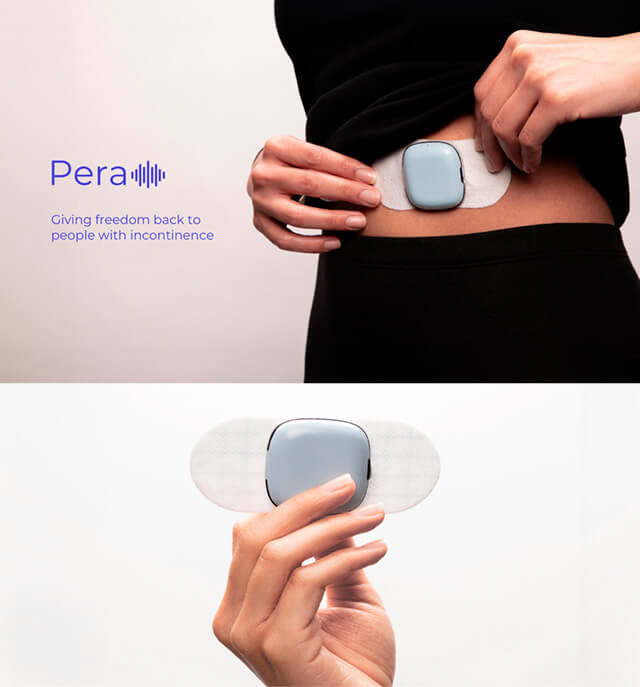
Pera is a wearable health assistant that tracks digestion for people with bowel incontinence. It offers real-time continuous monitoring that can predict passing stool 40 minutes in advance to prevent accidents. Extensive user research identified real life issues and unmet needs, which framed the design development process. Expert input was sought to better understand the medical context, the user base and in developing the product’s functionality and its ability to predict bowel movement, with user testing and validation of prototypes. The end product is discreet and easy to use.
The jury said of this project:
Pera could change the lives of millions if successfully implemented. An excellent postgraduate student project, and an ideal example of user research and inclusive design responding to a severe health issue currently receiving little attention.
Student Design Challenge Award 2024
- Student Design Challenge
- Coccola
Elena Maria Sezzano, Free University of Bozen-Bolzano: Italy
A set of three cushions designed for children with autism, offering numerous positions to make them feel comfortable and hugged, using simple materials with soft colors. Coccola is a thoughtful, well-researched project that addresses both user-needs and environmental issues. The design itself is friendly and reassuring, comfortable and inviting. A well-resolved student project.
The jury said of this project:
A simple solution that meets the brief and could be enjoyed by all children. Although parents were consulted, there is a lack of evidence of user research and in-depth design consideration regarding the final outcome/shape of the cushion.
Citations for Grand Awards (3)
Citations for Gold Awards (7)
Citations for Silver Awards (6)
Citations for Bronze Awards (11)
Citations for Award of Excellence for Student Design Challenge (1)
Citations for Student Design Challenge Award (1)
Announcement of IAUD International Design Award 2024 Winners






